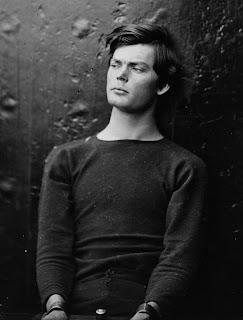Whilst this establishment has been touched upon in most histories of photography for producing the world's first photobook, Fox Talbot's The Pencil of Nature (1844) my interest in it is basically much more personal - it's situated in my town and despite its significance, i'd heard of it once in passing at College and in a couple of books, but no more. It's neither celebrated nor even mentioned here (but then what else can one expect of a place with employment in the ICT sector being 300% the national average). True enough, Reading's radical climb from a provincial outskirts-of-London backwater to an industrial epicenter throughout the 19th Century and the construction of major railway routes may have overshadowed the fleeting existence of a catastrophically unsuccessful photography business in 1844, but seriously; this establishment published the first ever book with photographic pictures in - perhaps the single most significant development in visual communication since Johannes Gutenberg invented movable type!
And the significance of Reading is hardly just a case of Henneman and Talbot being the first because someone had to be first. Fox Talbot's negative to positive Calotype process, which at this time (and pretty much for all time) remained less popular than the detailed finesse of the direct to positive Daguerreotype process, was the only format which permitted the duplication of photographs, and thus their recreation in publications. (Indeed, it was the model for how photographs were made on negatives right up until the advent of digital in the late 20th Century).
So, among the many factors I am opting to explore around this printing facility - from Talbot's attempts to commercially exploit his invention following the pre-emptive strike of Daguerre, to the reasons for it's failure after a mere two years - I'm also rediscovering the area in which it was located. And after some time spent researching changing street names and stalking Google street view I managed to not only locate the address, but upon visiting the location also capture some fleeting physical semblance of its past by finding unchanged elements featured in a well known photograph of its operations in 1846:
 |
| Fox Talbot's Circle, The Reading Establishment, c.1846 |
 |
| Google Map from 2009 |
 |
| Overlooking the garden of the Address, June 2013 |
Due to my photograph being taken in June, there is a tree in full bloom obscuring the next row of houses, but the Google map ratifies the angle at which they are, conforming with the 1846 image. Additionally, the 1846 image appears to be taken, at my guess, in early Spring or late Autumn due to the bare tree on the far right of the photograph combined with the fact plates are being printed in the center background - indicating strong, or at least consistently present sunlight.
While I don't expect many to find these research interests remotely as inspiring as I do, and this merely scratches the surface of my investigation into the establishment, pinpointing the location from which W.H. Fox Talbot himself once conducted business and printed a series of images that form the basis of the canon of the history of photograph is still pretty interesting stuff.


Yes!!
ReplyDelete